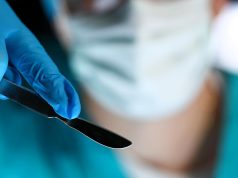Rates significantly higher among surgical than nonsurgical U.S. patients
By Lori Solomon HealthDay Reporter
FRIDAY, June 20, 2025 (HealthDay News) — Food insecurity is a significant burden among U.S. surgical patients, according to a study published online June 18 in JAMA Surgery.
Annabelle Jones, M.D., from Harvard Medical School in Boston, and colleagues assessed food insecurity and associated characteristics, as well as the rate of Supplemental Nutrition Assistance Program (SNAP) enrollment, among surgical patients. The analysis included 254,283 participants in the National Health Interview Survey (2011 through 2018; 32,823 surgical patients).
The researchers found that surgical patients reported higher food insecurity prevalence (11.6 percent) than nonsurgical patients (10.5 percent). In adjusted analyses, there were significantly higher odds of food insecurity among surgical patients (odds ratio, 1.12). There was a strong association between food insecurity and lower income and poor health. SNAP enrollment was 16 percent overall versus 40 percent among surgical patients with incomes <200 percent of the federal poverty level.
“Understanding whether hospital-based SNAP enrollment assistance and prospective food insecurity screening improve health outcomes in surgical patients is an important next step,” the authors write.
One author disclosed ties to several nonprofit and philanthropic organizations.
Abstract/Full Text (subscription or payment may be required)
Editorial (subscription or payment may be required)
Copyright © 2025 HealthDay. All rights reserved.








